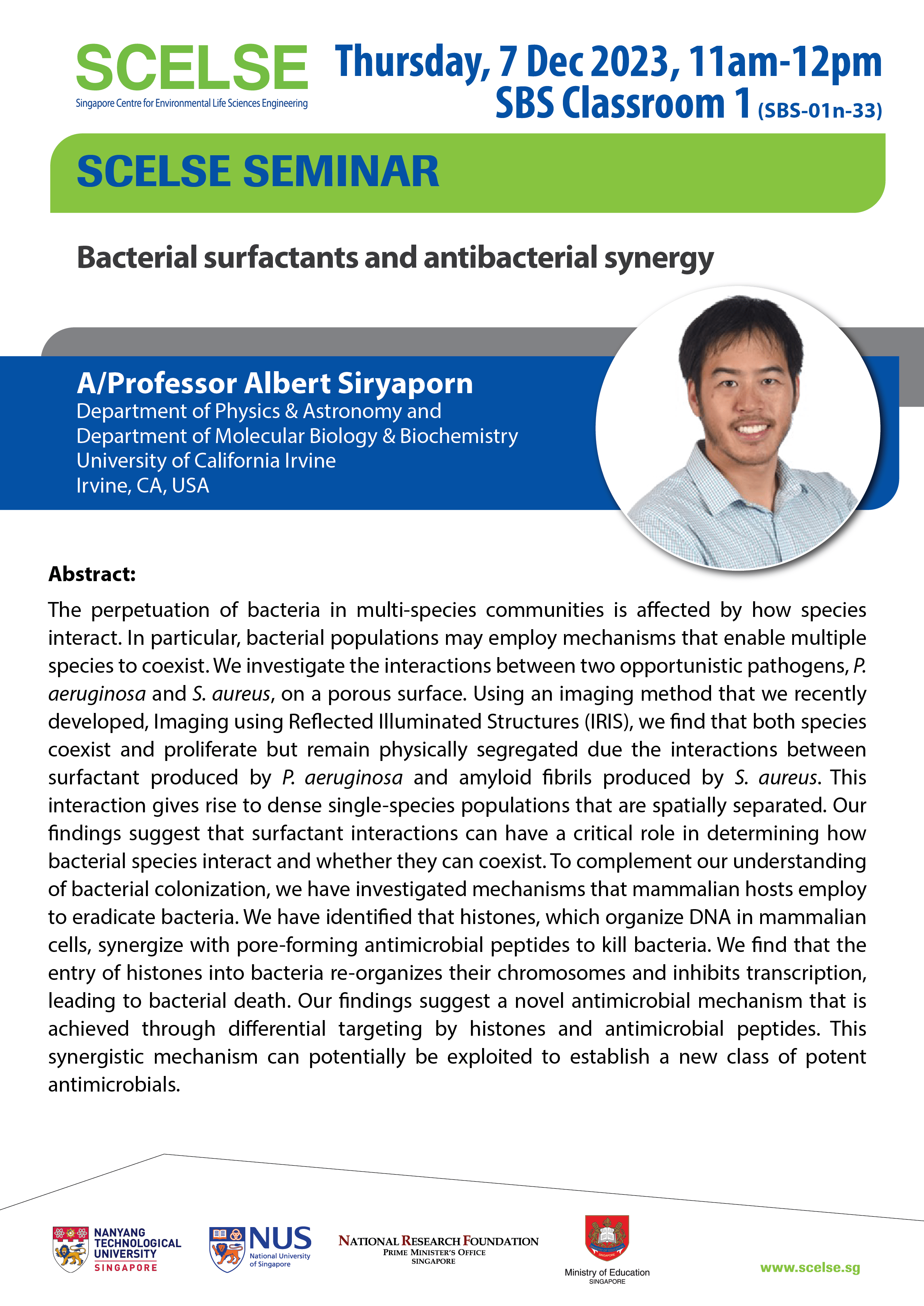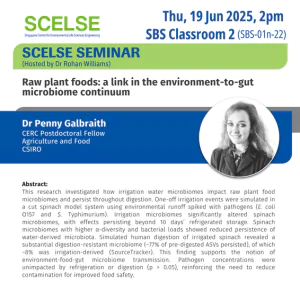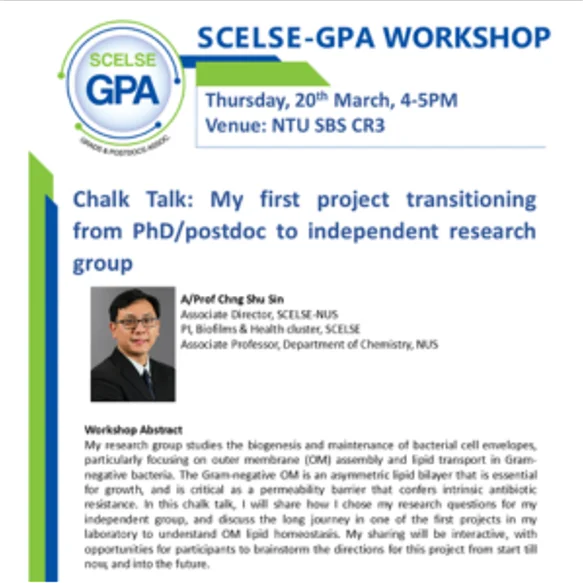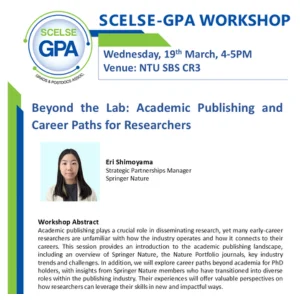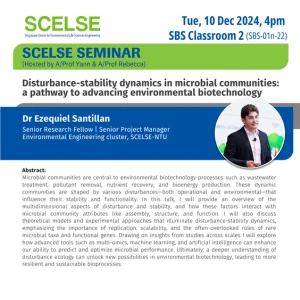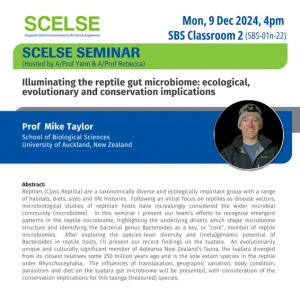Bacterial surfactants and antibacterial synergy
Date: Thursday, 7 Dec 2023
Time: 11am – 12pm
Venue: NTU School of Biological Sciences Classroom 1 (SBS-01N-33)
Abstract:
The perpetuation of bacteria in multi-species communities is affected by how species interact. In particular, bacterial populations may employ mechanisms that enable multiple species to coexist. We investigate the interactions between two opportunistic pathogens, P. aeruginosa and S. aureus, on a porous surface. Using an imaging method that we recently developed, Imaging using Reflected Illuminated Structures (IRIS), we find that both species coexist and proliferate but remain physically segregated due the interactions between surfactant produced by P. aeruginosa and amyloid fibrils produced by S. aureus. This interaction gives rise to dense single-species populations that are spatially separated. Our findings suggest that surfactant interactions can have a critical role in determining how bacterial species interact and whether they can coexist. To complement our understanding of bacterial colonization, we have investigated mechanisms that mammalian hosts employ to eradicate bacteria. We have identified that histones, which organize DNA in mammalian cells, synergize with pore-forming antimicrobial peptides to kill bacteria. We find that the entry of histones into bacteria re-organizes their chromosomes and inhibits transcription, leading to bacterial death. Our findings suggest a novel antimicrobial mechanism that is achieved through differential targeting by histones and antimicrobial peptides. This synergistic mechanism can potentially be exploited to establish a new class of potent antimicrobials.
Speaker:
A/PROFESSOR ALBERT SIRYAPORN
Department of Physics & Astronomy and
Department of Molecular Biology & Biochemistry
University of California Irvine
Irvine, CA, USA
